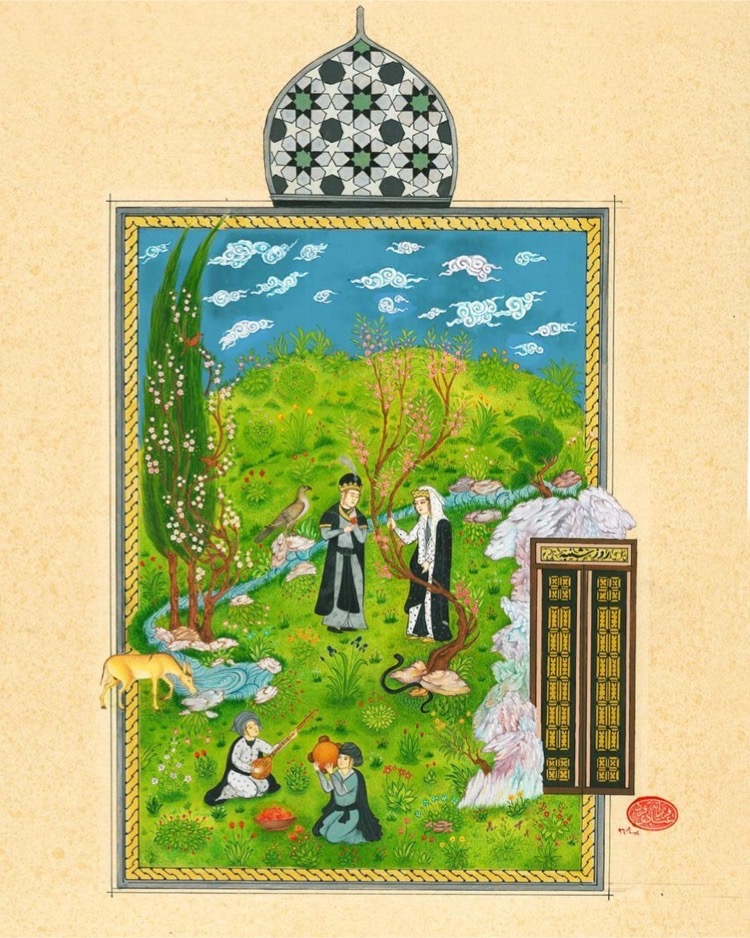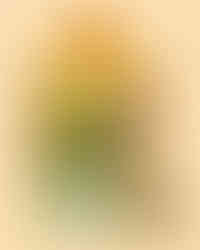Persian Painting, Farzaneh Ebadifard
- BAYT AL FANN
- Aug 3, 2022
- 5 min read
Farzaneh Ebadifard is a Persian miniature painter based in Germany. Initially Farzaneh studied chemical engineering, but then took up her passion for art and studied Persian miniatures at University. She then went on to complete an MA in Art History & International art. Farzaneh has painted professionally since 2000, working with diverse materials.
Farzaneh has exhibited in Iran and Germany and teaches Persian miniature painting in person and also online.

Your works are inspired by Persian miniature and Islamic illumination painting traditions of Iran. What made you develop an interest in these artistic traditions?
In my childhood, I was introduced to Persian poetry and literature by my father.
I used to look at the miniature paintings of poetry books and wished to paint like them one day. I had a huge passion and interest for painting since I was a child.
How did you train to become an artist specializing in these traditional artforms?
I started to paint professionally since 2000. I have worked with several materials such as pencil, oil, acrylic, gouache, watercolour. But the beginning of Persian painting was when I was 22 years old. I was trained by a private master for about two years and then I studied Persian painting at University.
My artistic turning point was during university because I got to know the historical aspect of Persian miniature art and managed to get to know the paintings more deeply. Until now I have written many structural and semiotic critiques on various Persian miniatures, and each time I am surprised by what was going on in this colourful world.

How has your cultural heritage influenced your creative practice?
Persian poetry and literature, especially Ferdowsi's Shahnameh, play a very important role in the culture and cultural structure of every Iranian. And as you know, Persian miniature art is the art of illustrating books, especially the Shahnameh.
And studying literature and the Shahnameh played a big role in understanding this art for me. Also visiting museums and old buildings that represented this valuable art.
Where do you find inspiration for your colour compositions?
Looking at the paintings of old painters is considered one of the most important inspirations of pattern and colour for me. And on the other hand, passing art courses such as colour recognition and colour combination and maybe a little experience helps to put colours together.

You have developed a contemporary twist on this traditional skill, how did you develop a distinct style?
I have been more loyal to the traditional Persian painting in my artworks. I mean, I never followed modern Persian miniature art professionally. But I think each person leaves his own mark in the painting. And I was never afraid of change in Persian traditional painting. Even copying old paintings. Changes in faces, colours, adding traditional motifs, Geometric patterns, illumination , etc to my paintings.
You also teach, how did you embark on teaching these traditional artistic skills?
I started teaching painting about 9 years ago. I started teaching Iranian painting at an art gallery in Tehran-Iran. I would start the teaching by focussing on the colours and combinations of colours, moving onto drawing, and then I would teach the important points of Persian painting with a copies of simple old Persian paintings.
And later, after I moved to Germany, I started teaching online and offline. I have experienced different teaching methods. I usually have a fixed training course including drawing and painting and sometimes I plan a new course at the request of the students.
I try to simplify teaching methods as much as possible. And I leave the choice of the courses (drawing or painting) to the students. In my opinion, teaching should be interesting and being too strict will discourage students. I always tried to make the learning process both basically and easy, so that the student would enjoy the learning process

Is visual storytelling a part of your creative practice?
It can almost be said that most of the old paintings are based on a story. Even single figures.
This point also applies to me and there is usually a theme behind my paintings that I sometimes write about. Sometimes even a portrait inadvertently finds a story.
Why is the preservation of cultural heritage important?
For me, cultural heritage is my roots and land. It doesn't matter that I don't live in my country, but it is always with me. Maybe it's better to say it's my identity and I always feel proud to show it and talk about it. A great gift that has passed from hand to hand and reached us and we must be worthy inheritors and pass it on to future generations.
Which artists inspire you?
There are many artists who inspire me, because the art of Persian painting was a group art, not individual, but if I want to name I would say Great Sultan Mohammad and Reza Abbasi.
Fortunately, currently we have very great and unique painters and Masters who teach this art and I learn from them and also get inspiration. But if I want to name: I always admire Master Abbas Moayeri and Master Reza Mahdavi.
Can you share your favourite work of art you’ve created to date and why?
A personal project called 7 Domes of Love, inspired by the stories of 7 peykar Nizami, drawing and painting of seven paintings inspired by the 7 stories of this book,
which took about 3 years and was exhibited in Tehran in 2017. At first, I studied the stories and then I draw and painted the stories based on the Tabriz second school. This collection is important to me because the signs and symbols of these mysterious stories are depicted in the form of paintings
Domes of Love
What advice would you give to an artist at the start of their journey?
In addition to interest in this art, the most important thing is patience. This art requires a lot of practice and it takes time to achieve results. And the value of this art is due to the time and patience that the artist spends on it. Never neglect the drawing, which is the basis of the painting.
What do you think the future of Islamic art looks like and how do you think we can continue to keep artistic traditions alive?
I think the future of traditional and Islamic arts is good considering the good artists and the interest to learn it. The only problem is the market for the sale of artworks, which is still not properly organized and may discourage artists in this field. Because artists also have to make a living from their art, and art is not just as hobby in today's world. Unfortunately, there is no specific platform to introduce artists and their works, and most artists introduce themselves and their works through Instagram. A number of artists sell works with relationships, and a group of them remains unknown. It may be useful to form a specific group for this art and make it easy for all artists to join and present their art for sale.
For more information check out: https://miniature4everyone.com/
https://www.instagram.com/miniature4everyone/ The views of the artists, authors and writers who contribute to Bayt Al Fann do not necessarily reflect the views and opinions of Bayt Al Fann, its owners, employees and affiliates.



















